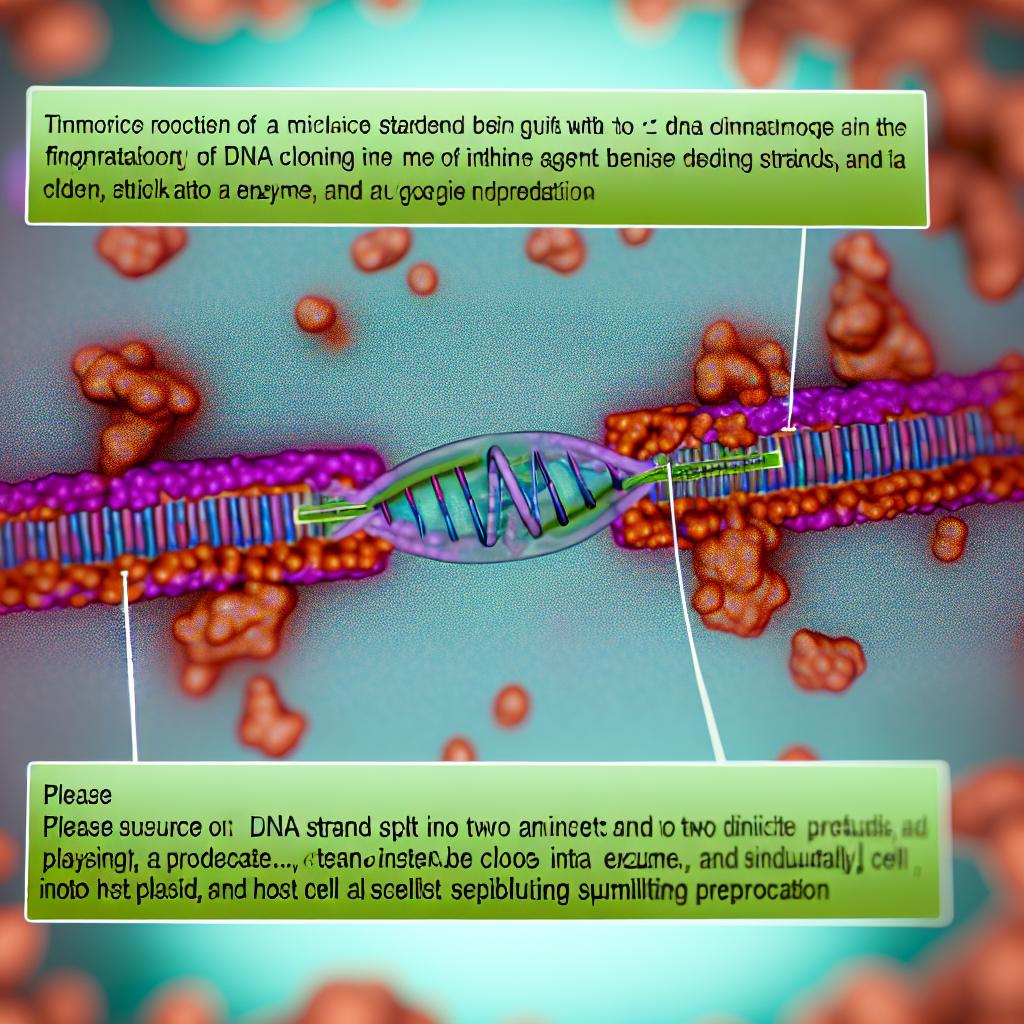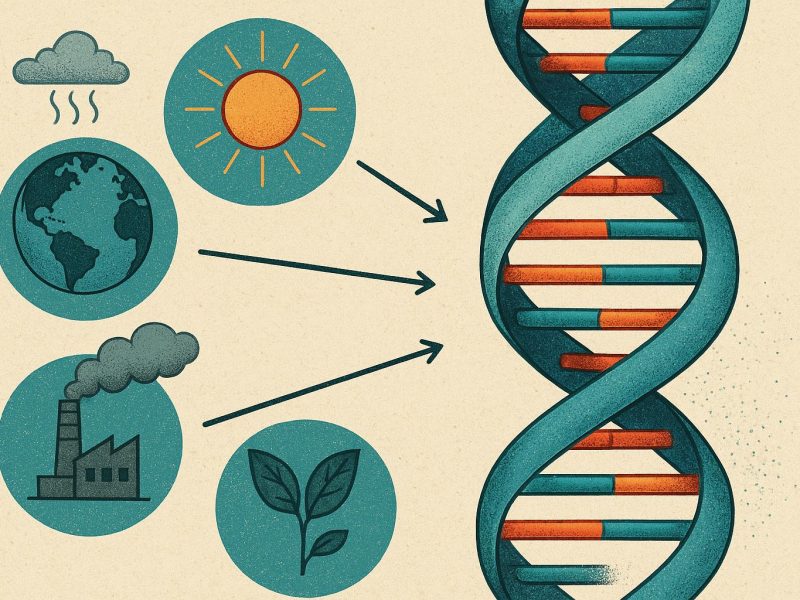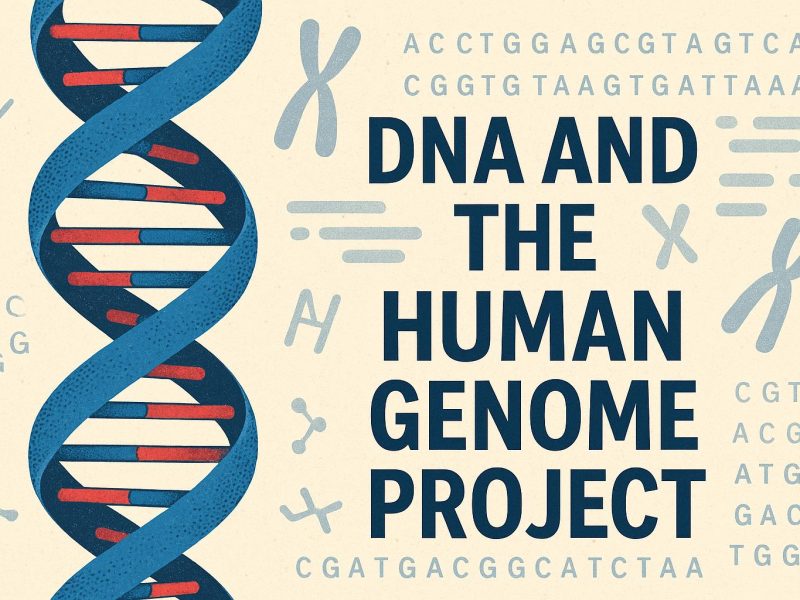Understanding DNA Cloning
DNA cloning is a fundamental technique used in molecular biology to create identical copies of a specific DNA segment. It plays a pivotal role in genetic research, allowing scientists to manipulate genes and understand their functions. This process is essential in various fields such as genetics, medicine, and biotechnology.
The Basics of DNA Cloning
The primary goal of DNA cloning is to produce multiple copies of a particular DNA fragment. This is achieved by inserting the DNA of interest into a host organism, typically bacteria, where the DNA can be replicated along with the host’s cellular processes.
The practice of DNA cloning involves utilizing the natural replication machinery of a cell to reproduce genetic material. This task essentially engineers bacteria or other host organisms into biological factories that replicate the DNA segment of interest. By doing this, researchers can ensure that they have a plentiful supply of the DNA needed for various experiments or applications, making it easier to study its specific functions or to use it in practical applications such as drug production.
The Cloning Process
DNA cloning involves several key steps to achieve the desired replication and analysis of a DNA sequence.
1. Isolation of the DNA Sequence: The first step is to obtain the DNA sequence of interest. This sequence can be a specific gene or any other DNA fragment necessary for research. Isolation often requires the use of specialized enzymes to cut the DNA at precise locations, ensuring that the correct fragment can be cloned. Researchers typically use restriction enzymes to cleave the DNA at specific sites. These enzymes are vital for cutting the original DNA into manageable, consistent pieces that can be manipulated.
2. Insertion into a Vector: The isolated DNA is then inserted into a vector. Vectors are DNA molecules that can carry foreign DNA into a host cell. Plasmids, which are small, circular DNA molecules found in bacteria, are commonly used vectors. A plasmid contains features that allow it to replicate within a host, and typically includes an origin of replication as well as selection markers, such as antibiotic resistance genes. This step sometimes requires the use of DNA ligases, enzymes that facilitate the joining of DNA fragments, thereby creating recombinant DNA molecules.
3. Introduction into Host Cells: Once the DNA is inserted into the vector, the vector is introduced into host cells. This process, known as transformation, is a crucial step where the host cells, usually a bacterial strain like Escherichia coli, will take up the vector and begin to replicate the DNA along with its own. Techniques such as heat shock or electroporation may be used to increase the permeability of the bacterial cell membranes, making it easier for them to take up the plasmid vectors.
4. Selection of Cloned Cells: Not all the host cells will successfully take up the vector. Therefore, a selection process is required to identify the cells that have been successfully transformed. This is often achieved by incorporating antibiotic resistance genes into the vector, allowing only the transformed cells to grow in a medium containing the antibiotic. Through this method, only the bacteria that have taken up the foreign DNA will survive when exposed to an environment containing the antibiotic, allowing researchers to easily identify successful clones.
5. Amplification and Analysis: The transformed cells are allowed to multiply, producing colonies of identical cells, each containing copies of the cloned DNA. These cells can then be harvested, and the cloned DNA can be extracted and analyzed for further study. This step is critical for obtaining sufficient quantities of DNA for analysis or for use in other applications. Techniques such as polymerase chain reaction (PCR) may be employed to further amplify the specific DNA segment from the bacterial cultures.
Applications of DNA Cloning
DNA cloning has numerous applications across different scientific disciplines. Its utility is evident in several sectors, making it an indispensable tool for modern science and industry.
In medicine, DNA cloning is essential for the production of proteins such as insulin and growth hormones. By cloning the genes that encode these proteins, researchers can produce large quantities for therapeutic purposes. This ability has transformed healthcare, providing life-saving treatments for individuals with diabetes, growth disorders, and other conditions.
In the field of gene therapy, DNA cloning facilitates the development of techniques aimed at correcting genetic disorders. By inserting healthy copies of genes into patients’ cells, scientists can potentially cure diseases at their genetic root, offering hope for conditions that were once thought to be incurable.
In agriculture, DNA cloning is used to create genetically modified crops with improved traits, such as resistance to pests or enhanced nutritional content. This application plays a critical role in addressing global food security challenges by increasing crop yields and reducing reliance on chemical pesticides.
Additionally, DNA cloning serves as a valuable tool in academic research, aiding in the study of gene function and regulation. By allowing scientists to manipulate and analyze specific genes, DNA cloning contributes to a deeper understanding of biological processes and the development of novel research methodologies.
Ethical Considerations
While DNA cloning holds great promise, it also raises ethical questions, particularly when it comes to its application in humans and the potential for genetic modification. These concerns necessitate ongoing dialogue and regulation to ensure that cloning technologies are used responsibly.
Issues of safety and morality are at the forefront of discussions regarding cloning, especially when considering the implications of cloning in human genetics. The idea of genetic modification provokes debate over the definition of natural life and the boundaries of scientific intervention in human evolution.
Regulatory bodies worldwide continue to evaluate the ethical dimensions of cloning, establishing guidelines that balance scientific advancement with ethical responsibility. It is crucial for researchers, ethicists, and policymakers to collaborate in navigating these complex ethical landscapes to ensure that the benefits of cloning technologies are realized while minimizing risks and respecting societal values.
For further reading on DNA cloning and its implications, consider exploring resources provided by leading scientific organizations and institutions like the Genome Research Institute or DNA Learning Center. These resources can offer a comprehensive overview of current research, ethical considerations, and the future potential of DNA cloning technologies.



